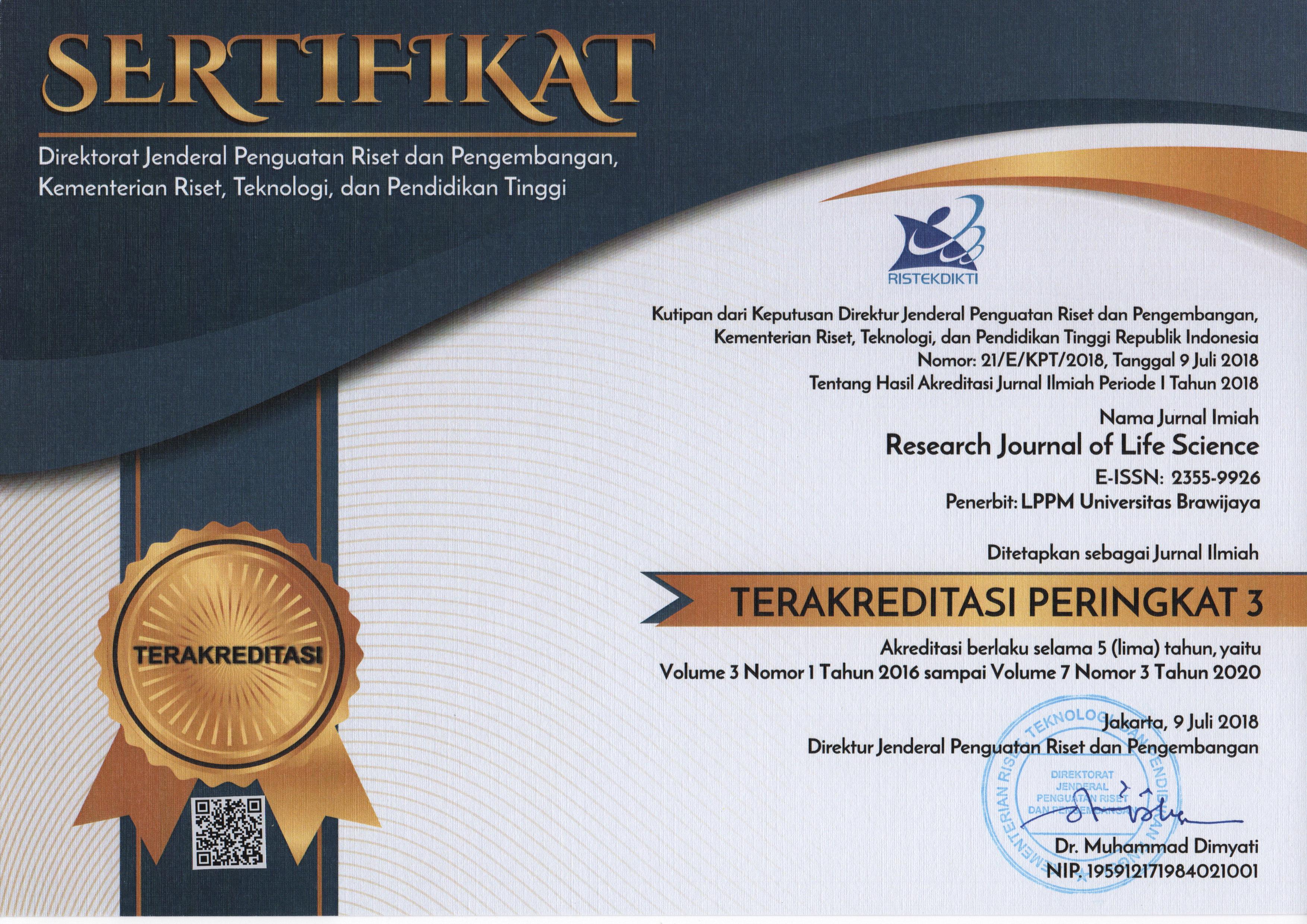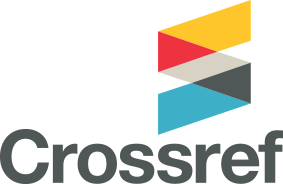Percentage of Hard Coral Cover and Coral Recruitment on in Bangsring Beach, Banyuwangi Regency
Abstract
One of the tourist attractions at Bangsring Beach is the condition of the coral reef ecosystem and unique marine biota that tourists can enjoy by snorkeling and diving. Based on research (Ekawati et al., 2021) using remote sensing, the area of live coral reefs on Bangsring Beach is as follows; 2005; 3.38, 2008; 2.61, 2011; 3.7, 2017; 3.98, 2020; 6.1 Ha). It can be said that the area of coral reefs increases yearly, although, in 2008-2011, it decreased by 32%. The results of the economic valuation explain that the (Total Economic Value) of the coral reef ecosystem in Bangsring Beach is 38.2 billion Rupiah/year or 2.9 billion Rupiah hectares/year. The use-value that has the largest economic value comes from tourism utilization of 25 billion or 60% of the Total Economic Value. The coral community structure includes Coral Branching, Coral Encrusting, Coral Massive, Coral Submaasive, and Coral Mushroom. Mushroom Coral is found solitary and shaped like a mushroom. The research data shows the average value of Bangsring Fish House cover is 82.5%. Fish house cover here is seen and assessed based on the presence of hard corals, soft corals, and algae. The average percentage of hard corals growing at the Bangsring Fish House was 30%, soft corals 21.5%, and algae 17.5%. Found 21 types of coral such as; Acropora, Favia, Turbinaria, Symphyllia, Goniastrea.
Keywords
Full Text:
PDFReferences
Abrar, M. (2015). Recruitment Of Hard Coral (Scleractinia) in Natuna Waters, Riau Islands Province. Oseanologi Dan Limnologi Di Indonesia, 41(2), 133-147. https://www.researchgate.net/publication/285541927_KARANG_KERAS_REKRUITMEN_SCLERACTINIA_DI_PERAIRAN_NATUNA_PROVINSI_KEPULAUAN_RIAU_RECRUITMENT_OF_HARD_CORAL_SCLERACTINIA_IN_NATUNA_WATERS_RIAU_ISLANDS_PROVINCE
Bengen, D.G. 2001. Resources of Marine and Coastal Ecosystem and an integrated and sustainable management. Proceeding of Integrated coastal management. Bogor, October 29th – November 3rd 2001. https://www.crc.uri.edu/download/Proceeding_ToT_ICM.pdf
Caley, M. J., Carr, M. H., Hixon, M. A., Hughes, T. P., Jones, G. P., & Menge, B. A. (1996). Recruitment and the local dynamics of open marine populations. Annual Review of Ecology and Systematics, 27. https://doi.org/10.1146/annurev.ecolsys.27.1.477
Ekawati, K. N., Handayani, T., Susiloningtyas, D., & Manessa, M. D. M. (2021). Conservation Monitoring of Coral Reefs in Bangsring Village, Banyuwangi as a Location on Ecotourism using Remote Sensing Imagery. Geomatics Engineering Seminars, 787-794 https://doi.org/10.24895/sng.2020.0-0.1194
Glassom, D., Celliers, L., & Schleyer, M. H. (2006). Coral recruitment patterns at Sodwana Bay, South Africa. Coral Reefs, 25(3). https://doi.org/10.1007/s00338-006-0117-6
Irizarry-Soto, E., & Weil, E. (2009). Spatial and temporal variability in juvenile coral densities, survivorship and recruitment in La Parguera, southwestern Puerto Rico. Caribbean Journal of Science, 45(2–3). https://doi.org/10.18475/cjos.v45i2.a14
Karmila, B. Sabarun, & Rahmadan. (2019). Type and Density of Coral Recruitment Based on Scleractinian Coral Life Form in Lalanu Waters Konawe Regency Southeast Sulawesi. Sapa Laut, 4(3), 106-112. http://ojs.uho.ac.id/index.php/JSL/article/view/8774/6337
Morton, J. 1990. The Shore Ecology of The Tropical Pasific. Unesco Regional Office for Science and Technology for South East Asia. Jakarta. 282p. https://pustaka.kebudayaan.kemdikbud.go.id/index.php?p=show_detail&id=11446&keywords=
Muhlis, M. (2019). The Growth of Acropora (Acropora nobilis and Acropora nosuta) in Senggigi. Jurnal Biologi Tropis, 19(1). https://doi.org/10.29303/jbt.v19i1.940
Munasik, M., & Widjatmoko, W. (2004). coral Acropora aspera reproduction at Panjang Island, Central Java: I. Gametogenesis. Marine Science, 9(4), 211-216. https://doi.org/10.14710/ik.ijms.9.4.211-216
Nybakken, J. W. 1988. Marine Biology. Translater : H. M. Eidman, Koesoebiono, D. G. Bengen, M. Hutomo and S. Sukardjo. PT. Gramedia. Jakarta. 459p. http://library.unisri.ac.id/opac/index.php?p=show_detail&id=7155
Obura, D.O. and Grimsdith, G. (2009). Resilience Assessment of coral reefs – Assessment protocol for coral reefs, focusing on coral bleaching and thermal stress. IUCN working group on Climate Change and Coral Reefs. IUCN, Gland, Switzerland. 70 p. https://www.iucn.org/sites/default/files/import/downloads/resilience_assessment_final.pdf
Rafilu, A.H., B. Sadarun, & R.D. Palupi. (2020). Coral Recruitment in Hari Island South Konawe Southeast Sulawesi. Sapa Laut, 5(1): 9-14. https://doi.org/10.33772/jsl.v5i1.1094
Veron, J.E.N. (2000a). Corals of the World. Townsville: Australian Institute of Marine Science. Volumes 1-3. 1410p. http://www.coralsoftheworld.org/synonymy_lookup/?taxonLink=Astrea_devantieri_Vero
DOI: https://doi.org/10.21776/ub.rjls.2023.010.01.3
Refbacks
- There are currently no refbacks.

This work is licensed under a Creative Commons Attribution-NonCommercial 4.0 International License.










